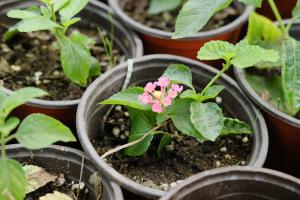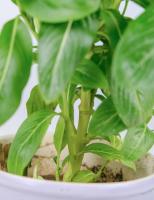When to Plant Fig Trees in Tennessee
Fig trees are a popular fruit tree that can be grown in a variety of climates, including in the state of Tennessee. However, for successful growth, the timing of planting fig trees is critical. In this article, we will explore the best time to plant fig trees in Tennessee for optimal growth and fruit production.
Climate in Tennessee
Tennessee is located in the Southeastern region of the United States, and its climate is classified as humid subtropical. The state experiences hot summers and mild winters, with an average annual temperature of 59.4°F. The state's location also results in a range of soil types, including sandy loam, clay, and silt loam. Before planting fig trees, it's essential to consider these factors for successful growth.
Best Time to Plant Fig Trees in Tennessee
Fig trees can be planted in Tennessee in the late winter or early spring, typically between late February and early April. This time offers the right balance of temperature and soil moisture conducive for successful establishment. However, it's vital to ensure the soil is not too waterlogged, which may cause root rot and other diseases. As such, planting should not begin earlier than late February to early March.
Planting Fig Trees in Tennessee
Before planting fig trees, there are a few essential steps to be followed for successful growth:
Select the right tree variety that is best suited for Tennessee's climate and soil. The most commonly grown varieties in Tennessee include Brown Turkey, Celeste, and Chicago Hardy.
Locate the planting area with well-draining soil that receives adequate sunlight.
Dig a hole appropriate to the size of the tree's rootball, usually twice as wide as the root size.
Add organic matter, such as compost or manure, to the soil to improve its structure and nutrient content.
Place the tree in the hole, ensuring the top of the rootball is level with the surrounding soil.
Backfill with soil, pressing it down gently around the tree to remove air pockets.
Water the tree immediately and deeply, soaking the soil around the rootball.
Add a layer of mulch around the tree to retain soil moisture and reduce weed growth.
Caring for Fig Trees in Tennessee
After planting, fig trees require proper care and maintenance to ensure successful growth and fruit production. This includes regular watering, pruning, and fertilizing.
Watering: Fig trees require deep and infrequent watering, typically every 7-10 days after planting. However, this may vary based on soil type and weather conditions. It's essential to ensure the soil around the tree is adequately moist to prevent drought stress.
Pruning: Fig trees require regular pruning to promote proper growth and fruit production. Pruning should be done in late winter or early spring, before new growth appears. It's vital to remove any dead, diseased or broken branches and shape the tree for optimal sunlight exposure.
Fertilizing: Fig trees require regular fertilization to promote healthy growth and fruit production. It's best to fertilize the tree in late winter, before new growth appears. A balanced fertilizer, such as a 10-10-10 or 8-8-8 is recommended for optimal growth.
In conclusion
Growing fig trees in Tennessee is possible with the proper timing, care, and maintenance. The best time to plant fig trees is in late winter or early spring, typically between late February and early April. For successful growth, it's essential to select the right tree variety, locate the appropriate planting area, and follow proper planting and care procedures.

 how many times do yo...
how many times do yo... how many planted tre...
how many planted tre... how many pine trees ...
how many pine trees ... how many pecan trees...
how many pecan trees... how many plants comp...
how many plants comp... how many plants can ...
how many plants can ... how many plants and ...
how many plants and ... how many pepper plan...
how many pepper plan...






























